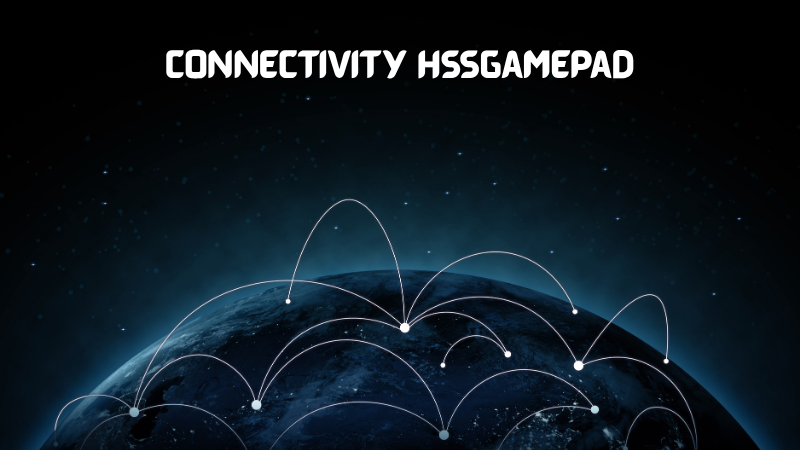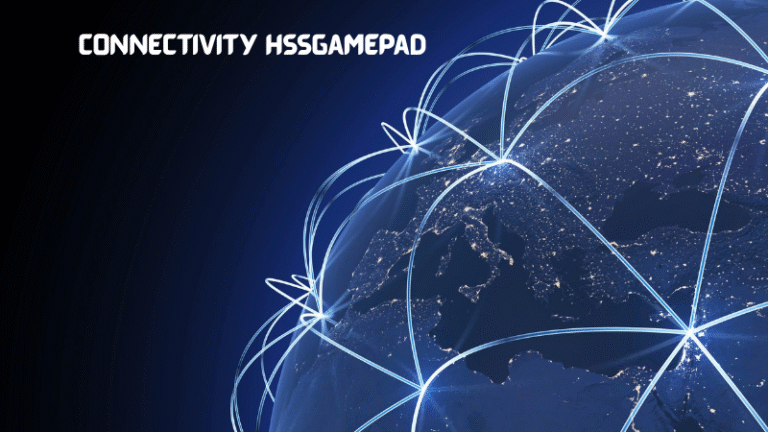Connectivity HssGamepad, the delicate hum of Bluetooth or the steady chord of USB. When it falters, the rhythm of play stutters. When it sings, immersion and flow emerge. This article traces that pulse: how connection is made, broken, mended—and ultimately made poetic.
2. What Defines HSS Gamepad Connectivity
2.1 Bluetooth vs. Wired—two dances of connection
Wireless connection thrives on invisibility—freedom to move, lines untethered. Yet it is capricious. Wired connection, by contrast, is grounded, reliable, an anchor for those who demand absolute responsiveness.
2.2 Cross‑platform harmony: PC, Android, consoles
The HSS Gamepad hums across Windows PCs, Android devices, Steam Deck, consoles like Xbox and PlayStation—each mode requiring its own dance, its own handshake to establish fluent synergy.
3. When the Beat Falters: Common Connectivity Issues
3.1 Pairing failures and invisible devices
Your system searches, but the controller remains hidden. Sometimes authentication fails mid-ritual. The connection attempt stalls before it breathes life into the pad.
3.2 Random disconnects and input lag
Gameplay is smooth, then freezes. Buttons register late. Often the culprit is signal interference, environmental noise—or power too low at the edge of threshold.
3.3 Unresponsive or unrecognized controllers
A plugged-in USB pat, but nothing changes. The pad speaks, but the system doesn’t hear. It may be driver errors, faulty cables, or misaligned modes blocking communication.
4. Root of the Silence: Causes of Disconnection
4.1 Low power and battery depletion
When batteries dip below ~15%, Bluetooth signal weakens. Disconnections, lag, and failure to respond follow.
4.2 Wireless interference and environment noise
Routers, other Bluetooth devices, USB 3.0 hubs, microwaves—the radio waves tangle in the air. Interference becomes opponent to signal.
4.3 Outdated firmware, drivers, and mode mismatches
Using outdated or mismatched firmware or choosing the wrong compatibility mode (PC, Xbox, Android) can block pairing or cause erratic behavior.
5. Healing the Connectivity hssgamepad
5.1 Charge smart, reset clean
Ensure gamepad power is above 25%. If it’s rechargeable, let it charge; if AA cells, replace old ones. Then give the controller a reset—press Home + Back for ~5–10 seconds until LED blinks, clearing prior pairings.
5.2 Re‑pairing, clearing, and rebooting
Remove old pairing records from Bluetooth settings; reboot both pad and device. Enter fresh pairing mode and re-establish connection as if anew.
5.3 Firmware updates and driver refresh
Connect the pad via USB, visit the official support site, download firmware updates. On PC, update drivers via Device Manager. These steps resolve many hidden misalignments.

6. Advanced Rituals: Power Settings and USB Tweaks
6.1 Power‑management adjustments
Disable USB selective suspend and Bluetooth power saving. In Device Manager, uncheck “allow computer to turn off this device to save power.” This makes your pad steady in the breath of play.
6.2 USB ports, dongles, wired fallback
When wireless balks, connect with a quality USB cable. Test different ports. If needed, use a modern Bluetooth 5.0 dongle for better signal stability.
7. Creating a Stable Signal Sanctuary
7.1 Device placement and spatial clarity
Keep your controller within 10–15 feet of the host, ideally in line of sight. Avoid thick walls or metal surfaces that block wireless whispers.
7.2 Reducing interference and device crowding
Turn off unnecessary wireless devices nearby. Move routers, hubs, other controllers several feet away. Switch Wi-Fi to 5 GHz when possible. The air grows less cluttered, and the signal breathes again.
8. Real Stories: Gamers Reclaiming Their Flow
8.1 From frustration to victory with a simple reset
One player described gameplay dropping every 10 minutes until a Home+Back reset and firmware update made the pad steady again. Battery was low—and the reset cleared old pairing ghosts. Now the flow returns uninterrupted.
8.2 Wired redemption after a storm of dropouts
Another user had persistent lag on PC with Bluetooth. Switching to a wired USB connection resolved latency and disconnects instantly. The wired chord became a lifeline of stability.
9. FAQs: Whispered Queries from the Heart of the Game
Why does my gamepad keep disconnecting?
Low battery power, interference, and misaligned firmware or modes are top causes. Start with charging, environment check, and mode reset.
How do I fix pairing failure?
Forget the device, power-cycle both ends, reset the pad via Home+Back, then re-pair cleanly. Ensure correct compatibility mode is selected.
Should I prefer wired to wireless?
For competitive or lag-sensitive gaming, wired connection offers more consistency. Wireless is wise for mobility, but demands clean environment.
When is a reset or firmware update needed?
Reset when repeated failures occur. Firmware updates fix deeper systemic misalignments—check support site periodically for updates.
What platform‑specific differences matter?
Use Android mode on phones (ensure Bluetooth & Location on), Windows/Xbox mode on PC/consoles, MFi mode on iOS if supported. Mismatch can block pairing entirely.
10. Conclusion: Harmony in connectivity hssgamepad, Poetry in Play
Connectivity hssgamepad is more than wire and code—it’s a rhythm of signals, a dance of frequencies. When broken, frustration blooms. But when restored, play becomes poetry: each press resonates, each movement flows, each session hums with coherence.
By tuning power, resetting with clarity, updating firmware, optimizing placement, and understanding the environment, you restore not just signal—but the pulse of play. May these guiding steps help you reclaim harmony in connection—and rediscover the joy that pulses beneath wireless wings.
